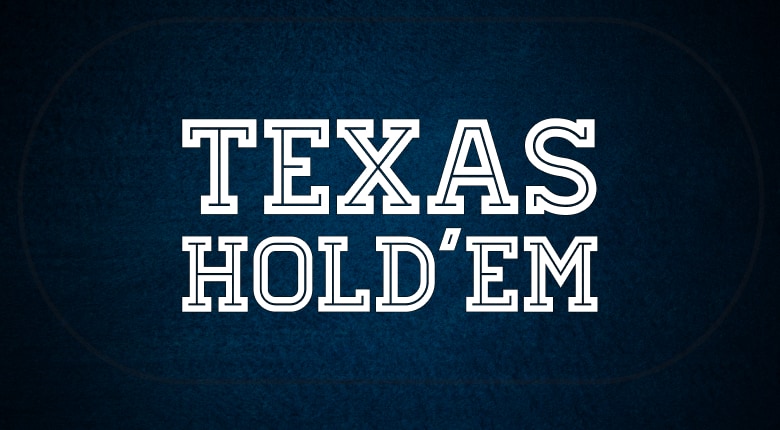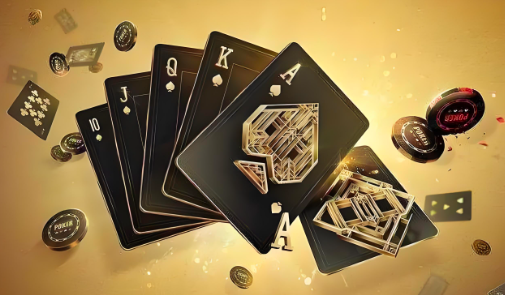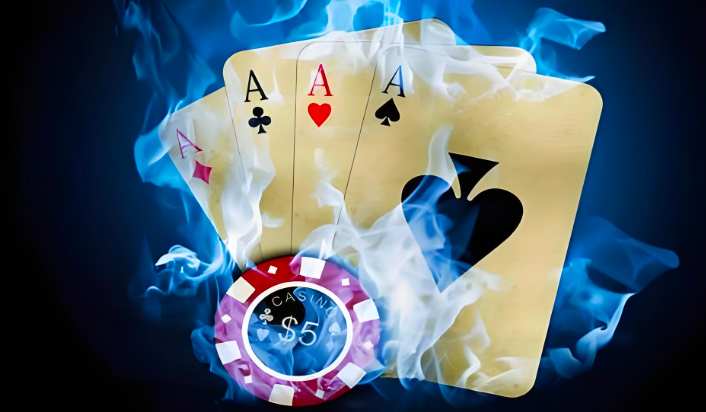“Card power type” refers to how strong the player's current card type has in terms of adversarial strength. Many players often mistake their card power and lose the overall game. This guide specifically guides players on how to understand their card strength and type, so that they won't make wrong decisions in critical moments in the future.
The Basic Strategy of Texas Poker “Card Strength”
From the moment the game is dealt, the “card type” becomes the most important reference for all players to make action decisions. Understanding the card type in one's hand and taking appropriate actions based on the card type is the most important lesson for beginners in Texas poker.
The so-called card strength type here does not refer to the commonly mentioned combination of the same flower and Shunzi cards, but rather to the current strength of the player's opponent in this hand. Therefore, the card types explained below are distinguished based on the strength of the card, rather than simply considering the size of the card.
The power card types are divided into “relative” and “absolute”:
1) Relative card type:
If a player can accurately read the card and confirm that their current card type is leading or falling behind their opponent, then the card type is the relative card type.
Texas Poker Guide: Basic Guide to Card Strength and Pattern
2) Absolute value card:
Regardless of the opponent, use the absolute card strength of one's own card type as the basis for judgment. Due to the fact that most Texas poker players in China do not yet have the ability to accurately read cards, entry-level players can only use “absolute card type” as the basis for judgment.
Additional note: The card types used in this guide are based on absolute card types as a reference. In the future, there will be more advanced card reading courses that will use many relative card types.

There are three main types of card strength in Texas poker:
Value card type
When a player's card becomes the largest nut card or a major card that opponents find difficult to defeat, it is called a value card type. The reason why it is called “value” is because this type of card often helps players win more benefits, and this type of card is more valuable.
Common value card types:
1. Bottom cards AA and KK.
2. Public signs:
1) Strong Value Card: A card type that allows opponents to see one more card that is not easily reversed.
Texas Poker Guide: Basic Guide to Card Strength and Pattern
2) Medium value card: Just temporarily leading, there is a possibility of one more card being reversed.
Texas Poker Guide: Basic Guide to Card Strength and Pattern
3) Thin Value Card: Temporarily leading and easily visible, with a higher likelihood of being reversed, making it less likely to gain significant value.
Texas Poker Guide: Basic Guide to Card Strength and Pattern
Basic actions of value card type
Obtaining a value card is certainly preparing to win more chips from the opponent. At this point, the main action is to place bets.
The strategy of “value cards” in facing various opponents
1. Opponents of “Follow up Stations” (like to follow cards)
“Follow up station” refers to an opponent who has some hand power or likes to follow all the cards when listening. Follow up stations are the biggest gold owners of value cards. If players receive value cards, they can decisively place large or full bets on follow up stations to strive for maximum value.
2. “Fierce” opponents (like to take the initiative to bet)
Fierce opponents have a keen sense of hand power and will test their hand power by placing bets. Once they find that their winning rate is not high, they will give up decisively. Therefore, unless you happen to get the enemy card, it is difficult to get too much value from them. Super value cards can choose to pass and wait for the opponent to place a bet before following up. Mid strong value cards can choose to pass, and after the opponent places a bet, they can make a counter raise. At this point, most opponents will choose to discard the card.
3. “Weak” opponents (discard cards if not hit)
Weak opponents have a more sensitive perception of card strength, and without nuts, they are basically abandoned. Weak opponents are not customers of valuable cards, so it is better to place normal bets.
4. Lack of understanding of opponents and multiple opponents
If you are not sure about your opponent's betting habits, following the principle of “playing the big pool with big cards” and taking the initiative to bet is a better choice. ABC opponents only play when they have cards, and players should actively bet on value cards. The size of the bet can be determined by the opponent's actions on the spot.
Showdown card type
When a player obtains a card type that has a certain power but is not enough to defeat all the cards, there is a certain risk of losing these card types, and they are not suitable for competing with opponents for maximum value and benefits. Instead, they are more suitable for showdown with opponents. This type of card is called a “showdown card”.
Common types of showdown cards:
1. Strong showdown: A card type that can be showcased at a higher cost can be used as a thin value card to raise stakes when the opponent does not place a bet to show weakness.
Texas Poker Guide: Basic Guide to Card Strength and Pattern
2. Showdown: A type of showdown card that is not suitable for betting.
Texas Poker Guide: Basic Guide to Card Strength and Pattern
The basic actions of showdown card type
The showdown card type is suitable for the size of the showdown ratio, and the priority action is to pass the card. The cost is not high and can be followed by betting.
The strategy of “showdown” in facing various opponents
1. “Weak” opponents (discard cards if not hit)
A weak opponent is a good customer for showdown, and they like to discard their cards. In showdown, they can bet on their opponents to discard their cards and win the lottery in advance.
2. “Fierce” opponents (like to take the initiative to bet)
Most fierce opponents will take the initiative to place bets, making it difficult to deal with them in a showdown. However, although normal fierce opponents place bets frequently, the amount of bets will not be too large. Players can prioritize passing or following the bet.
3. Opponents of “Follow up Stations” (Likes to follow cards)
“Follow up stations” like to follow up on bets, and when facing a showdown with a follow up station, they absolutely cannot place bets. They must pass the cards honestly and compete in the final showdown.
4. Lack of understanding of opponents and multiple opponents
When unsure of the opponent, adhere to the principle of “playing small pools with small cards”, show your cards honestly, pass or follow your bet, and never take the initiative to bet.
Fraudulent card type
According to statistics, if a player has two cards that are not paired, after three flipped cards are issued, more than 60% of the players cannot even match one pair. These 5 unpaired loose cards (commonly known as the 5 fools) cannot compete with opponents for value, and it is difficult to compete in size with opponents. They can only rely on “bluff” to scare away opponents, so they are called “bluff card type”, or more accurately, a hand of “garbage card”.
Cheating card types can be divided into two types:
1. Half bluff card type (listening card): A card type that has the same flower, Shunzi, and other listening cards. When actively betting and unable to scare the opponent away, it can also be reversed by drawing cards. This type of bluff card with a certain probability of winning is called the “semi bluff card type”.
Texas Poker Guide: Basic Guide to Card Strength and Pattern
2. Pure fraud card type (air card, garbage card): A card type that has no listening cards.
Texas Poker Guide: Basic Guide to Card Strength and Pattern
The basic actions of the bluff card type
No matter how good the listening card is, the chance of winning the next card will not exceed 50%. Therefore, even if there are many cards to listen to, the priority is still to “see the cards at the lowest cost”. Of course, depending on different opponents, there can still be other different ways of playing the bluff card type.
The strategy of “bluff card type” in facing various opponents
1. “Weak” opponents (discard cards if not hit)
The weak opponent is the best friend of the bluff card, bravely use the bluff to bet and drive away these timid opponents.
2. Opponents of “Follow up Stations” (Likes to follow cards)
“Follow up stations” are the natural enemies of deceptive cards. Faced with follow up stations, players can only pass the cards honestly. “Half deceptive” behavior towards follow up stations is the most common mistake made by online game players. Even if a player has a super large listening card that listens to flowers and obedience, as long as the opponent does not discard the card, all bets are wrong, and passing the card honestly is the best action.
3. “Fierce” opponents (like to take the initiative to bet)
“Fierce” opponents have strong aggressiveness, and unless the player is certain that the opponent has the possibility of discarding cards, “passing or discarding cards” is the best choice.
4. Lack of understanding of opponents and multiple opponents
If you are not clear about your opponent, follow the principle of “no cards, no playing”. Be honest about passing or discarding cards by deceiving others, and do not cause trouble for yourself.
Change in card power
Players now know the “value card type”, “showdown card type”, and “bluff card type”, but as flipping, turning, and river cards are issued one after another, the player's card strength card type will also change accordingly. Many novice players are not familiar with changes in card power, which often leads to misjudgments and losses in the overall situation. Therefore, this course provides a separate explanation of card strength, allowing players to more accurately grasp the changes in card strength in the future and take the right actions.
Absolute card power
The strength of the card type itself, without considering the opponent, is called “absolute card power”.
Texas Poker Guide: Basic Guide to Card Strength and Pattern
Relative card strength
The comparison with the possible card types that the opponent may receive is called “relative card strength”.
Texas Poker Guide: Basic Guide to Card Strength and Pattern
Players should pay more attention to the changes in relative card strength. Many times, our absolute card strength has increased, such as:
Texas Poker Guide: Basic Guide to Card Strength and Pattern
Texas Poker Guide: Basic Guide to Card Strength and Pattern
The player's absolute card power has increased from a K-top pair to a KQJT9 pass, but the opponent is more likely to have obtained an AKQJT pass or a tie, and the player's relative card power is actually lagging behind. If the player is not careful at this time, they are likely to lose a big game.
Card Type Summary:
1. Always confirm whether your card type is “value”, “showdown”, or “fraud”.
2. When playing big cards in the big lottery pool, value cards should actively bet and actively expand the lottery pool.
3. When playing small cards, control the pool and do not expand the pool when showcasing cards.
4. Do not enter the pool without cards, be willing to give up on fraudulent card types, and do not participate in the lottery pool.



